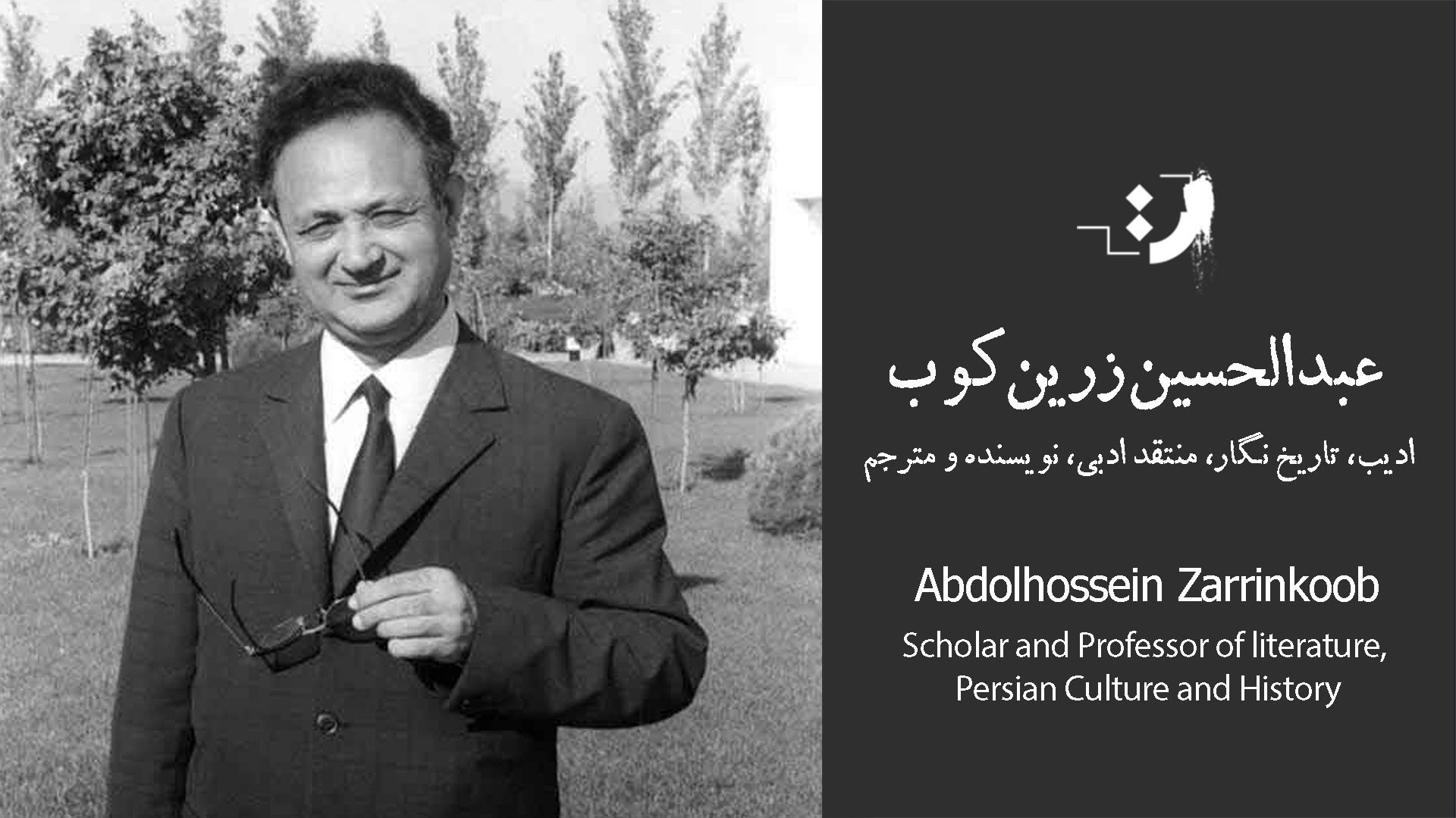Abdolhossein Zarrinkoob

Biography
Abdolhossein Zarinkoub (also spelled Zarrinkoob) was born in Borujerd. He was a prominent scholar of Iranian literature, history of literature, Persian culture, and history. He received his Ph.D. from Tehran University in 1955 under the supervision of Badiozzaman Forouzanfar, and held faculty positions at prestigious universities such as Oxford University, Sorbonne, and Princeton University, among many others. Due to his pioneering works on Iranian literature, literary criticism and comparative literature, he is considered as the father of modern Persian literature. Zarrinkoub’s solid research works made him a world class Iranologist and undisputed master of Persian literature and poetry. He was known for his extreme precision and solid works. He was the author of many books in Persian, French, and English, and published hundreds of articles. Some of his more famous works in English are: “The Arab Conquest of Iran and its Aftermath” in Cambridge History of Iran, Vol. 4, London, 1975; “Persian Sufism in its Historical Background,” in Iranian Studies III, 1970; and “Nezami, a Lifelong Quest for a Utopia,” 1977, Rome. One of his famous books entitled “Naghde Adabi” (Literary Criticism) is a classic book on Persian literary criticism. Zarrinkoub is also known for his profound research on revered Iranian poet Mowlana Jalaleddin Mohammad, aka “Rumi.” Zarrinkoub’s “Serr-e Ney” (Secret of the Reed) and “Bahr dar Koozeh” (Sea in a Jug) are critical and comparative analysis of Mowlana’s “Masnavi.” “Pelleh Pelleh ta Molaghate Khoda” (Step-by-Step until Visiting God) is also a work he carried out on the same theme. Zarrinkoub’s research works on Hafez and Persian mysticism resulted in several books: “Az Koucheh-ye Rendan” and “Arzesh-e Miras-e Soufi-yeh.” His classic history book, “Two Centuries of Silence” is one the most reliable sources on the history of Iran/Persia after fall of the Sasaninan Empire. This book is undergoing translation into English by Mazda Publishers and will be available in the near future.
Some of his works in English are:
The Arab Conquest of Iran and its aftermath: in Cambridge History of Iran, Vol. 4, London, 1975.
“Sufism in its historical perspective”, Iranian studies III, 1970, p. 137-220
Nizami, a Lifelong Quest for a Utopia, 1977, Rome.
Literary criticism and comparative literature
Zarrinkoob wrote a book called “Naqd-e Adabi” (نقد ادبی, “Literary Criticism”) covering comparative literature and Persian literary criticism.
Rumi and Erfan
Zarrinkoub also wrote about the Persian poet Molana Jalaleddin Balkhi (Rumi) and his works. Zarrinkoub’s “Serr-e Ney” (سرّ نی, “Secret of the Reed”), “Pelleh-Pelleh ta Molaqat-e Khuda” (پلهپله تا ملاقات خدا, “Step by Step until Visiting God”) and “Bahr dar Koozeh” (بحر در کوزه, “Sea in a Jug”) are critiques and comparative analyses of Rumi’s Masnavi.
Zarrinkoub’s research works on Hafez and Persian mysticism resulted in several books including “Az Kuche-ye Rendan” (از کوچهٔ رندان) and “Arzesh-e Miras-e Sufiyeh” (ارزش میراث صوفیه).
History of Persia
Zarrinkoub wrote “Two Centuries of Silence” (دو قرن سکوت) on Islamic history and Ruzegaran (روزگاران) (The Ages) (Iran’s history from the beginning to the fall of the Pahlavi dynasty), which covers the 3,000-year history of Iran since the Aryans migrated to the Iranian plateau.
- Birthday: March 19, 1923
- Death: September 15, 1999
- Birthplace: Boroujerd, Lorestan, Iran
Scholar and Professor of literature, Persian Culture and History
